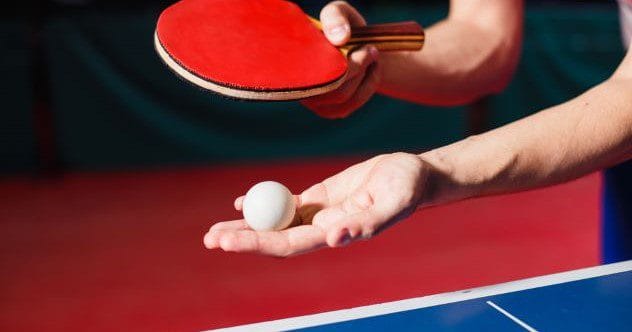The Olympics showcase the world’s athletic elite, uniting esteemed sports from across the globe. However, not every sport received a warm welcome upon its Olympic debut. Several faced harsh criticism and skepticism, with detractors questioning their suitability for the Olympic Games.
From worries about professionalism to doubts regarding physical demands, each addition uniquely challenged Olympic ideals and traditions. Let’s explore ten Olympic sports that initially caused an uproar but eventually secured their place on the world stage, becoming iconic elements of the games.
Basketball (Added in 1936)
Basketball’s inclusion in the 1936 Olympics raised eyebrows among traditionalists who believed team-based sports were out of place. Previously, the Olympics emphasized individual achievements in events like track and field, gymnastics, and swimming. Basketball, seen as an American pastime, faced skepticism from countries doubting its international appeal. Its debut on an outdoor clay court in Berlin, with players battling rain-soaked surfaces, didn’t improve its reputation.
Despite these hurdles, basketball’s popularity soared, aided by the Olympics boosting its global appeal. International basketball flourished, and the introduction of the “Dream Team” at the 1992 Barcelona Games, featuring NBA stars like Michael Jordan and Magic Johnson, cemented basketball as a top-tier Olympic sport. The inclusion of 3×3 basketball in 2020 further proved the sport’s adaptability, turning a controversial addition into a fan favorite. [1]
Beach Volleyball (Added in 1996)
Beach volleyball’s debut at the 1996 Atlanta Games met resistance from Olympic traditionalists who deemed it too “casual.” Critics felt its laid-back image clashed with the Olympic spirit, which traditionally highlighted sports emphasizing endurance, skill, and mental discipline. The revealing uniforms, particularly for women, added to the controversy, with detractors claiming they undermined the formal, dignified image of the Olympics.
Over time, beach volleyball has proven itself as a thrilling, competitive, and intensely athletic sport, consistently attracting large crowds. Its fast-paced matches showcase players’ skill and agility, while the beach setting offers a unique visual experience. Today, it’s celebrated for its global appeal and intense athleticism, proving that even a sport initially dismissed as “frivolous” can enrich the Olympic experience. [2]
Snowboarding (Added in 1998)
Snowboarding’s inclusion in the 1998 Winter Olympics in Nagano, Japan, marked a significant departure from tradition, sparking intense debate. Snowboarding culture, rooted in extreme sports and heavily influenced by skateboarding, clashed with the more formal world of skiing. Traditionalists argued that snowboarding didn’t uphold the “spirit” of the Winter Olympics, fearing its association with countercultural elements would diminish the event’s prestige. The International Ski Federation (FIS), initially resistant, eventually embraced the sport under pressure but remained hesitant.
However, snowboarding’s debut injected youth and excitement into the Winter Games, attracting a new generation of fans and showcasing exhilarating events like the halfpipe and slopestyle. It quickly became one of the most popular events, with competitors like Shaun White and Chloe Kim becoming household names. Today, snowboarding is viewed as an essential part of the Winter Olympics, celebrated for its daring tricks and unique culture that bring fresh energy to the games. [3]
Tennis (Reintroduced in 1988)
Tennis was initially part of the Olympics in 1896 but was removed in 1924 due to disputes over amateurism. Upon its reintroduction in 1988, critics argued that prestigious tournaments like Wimbledon and the US Open made its Olympic inclusion redundant. Some believed professional players would overshadow amateurs, skewing the games’ spirit. Many questioned whether tennis stars would value Olympic medals as highly as Grand Slam titles.
Despite skepticism, tennis quickly integrated into the Olympic landscape, with players from around the world competing for a gold medal. Today, athletes like Serena Williams, Rafael Nadal, and Roger Federer regard their Olympic achievements as career highlights. The Olympics also brings tennis to a global audience, introducing the sport to new fans. [4]
Golf (Added in 2016)
Golf’s return to the Olympics in 2016 after more than a century was controversial, with many questioning its relevance and accessibility. Detractors argued that golf was an elitist sport, out of touch with the Olympic emphasis on inclusivity. Some believed major golf tournaments already provided enough global exposure. The backlash grew when high-profile players skipped the Olympics due to the Zika virus and other concerns.
However, golf’s Olympic return proved valuable, with players increasingly valuing an Olympic gold. Countries with less established golf scenes were motivated to support young talent, making golf a more global sport. Today, Olympic golf is embraced as a chance for golfers to represent their countries and promote the sport’s growth. [5]
Rugby Sevens (Added in 2016)
Rugby Sevens debuted at the 2016 Rio Olympics, reigniting debates over rugby’s place since its last appearance in 1924. Rugby’s Olympic history was marred by a violent clash between French and American teams in 1924, leading critics to worry about the sport’s physical intensity. Traditionalists argued that its violent collisions conflicted with the values of sportsmanship central to the Olympic Games.
Despite these concerns, rugby sevens introduced a high-octane version of the sport, with matches lasting just 14 minutes, ideal for capturing a wide audience. The format was a hit, and the intensity of the games brought new energy to the Olympics. Rugby sevens has since proven that even physically demanding sports can find a place, adding a thrilling element to the games. [6]
Rhythmic Gymnastics (Added in 1984)
When rhythmic gymnastics joined the Olympics in 1984, it sparked debates over its place. Critics saw it as more performance art than a sport, emphasizing dance and flexibility over athletic rigor. Some claimed it was better suited to the stage, raising doubts about its legitimacy as an athletic competition.
Over time, rhythmic gymnastics has proven its athletic and artistic merits with intricate routines that demand skill, timing, and coordination. Its popularity has grown, especially in countries like Russia and Japan, where it’s celebrated for its beauty and difficulty. Today, it has become a highlight of the Olympics, valued for its elegance and complexity. [7]
Freestyle Skiing (Added in 1992)
When freestyle skiing debuted in 1992, it faced criticism for its perceived similarities to snowboarding. Traditionalists worried that it was too risky and outlandish for the Olympics. Its emphasis on tricks and high-speed maneuvers made some question whether it was truly an “Olympic” sport.
Despite these concerns, freestyle skiing quickly found an enthusiastic audience, captivating fans with its mix of artistry, skill, and high-stakes maneuvers. The sport’s popularity has only grown, with new events being added. Today, freestyle skiing is celebrated as a visually exciting and challenging addition to the Winter Olympics, redefining competition on the slopes. [8]
Table Tennis (Added in 1988)
When table tennis joined the Olympic lineup in 1988, it was initially viewed as more of a casual game than a sport fit for Olympic competition. Critics saw it as an informal activity associated with rec rooms, doubting its intensity. The fast, technical nature of professional table tennis quickly won over fans, with Asian countries like China demonstrating incredible skill.
Today, table tennis is a major Olympic sport that attracts a passionate following, with players training for years to reach the top. The sport’s Olympic presence has also boosted its popularity worldwide, encouraging development programs. What seemed an unlikely addition has now become one of the most thrilling events at the Olympics. [9]
Skateboarding (Added in 2020)
When skateboarding was announced as an Olympic sport for Tokyo 2020, it sparked intense debate. Skateboarding’s roots in counterculture and street style seemed at odds with the structured Olympics. Many feared that bringing it into the Olympics would force it to abandon its core values. Traditionalists argued that skateboarding was too unstructured to fit within the Olympic framework.
However, skateboarding’s Olympic debut turned out to be a massive success, drawing in younger audiences and injecting authenticity into the games. Skaters showcased talent and creativity, performing tricks that captivated viewers. Skateboarding now holds a unique place, embodying a modern approach to sportsmanship. [10]
These sports, once on the fringes of acceptance, have not only become integral parts of the Olympics but have also broadened its appeal, attracting new audiences and athletes alike. Their journeys from controversial additions to celebrated events highlight the evolving nature of sports and the Olympic Games.
Which of these sports surprised you the most? Leave your comment below!










